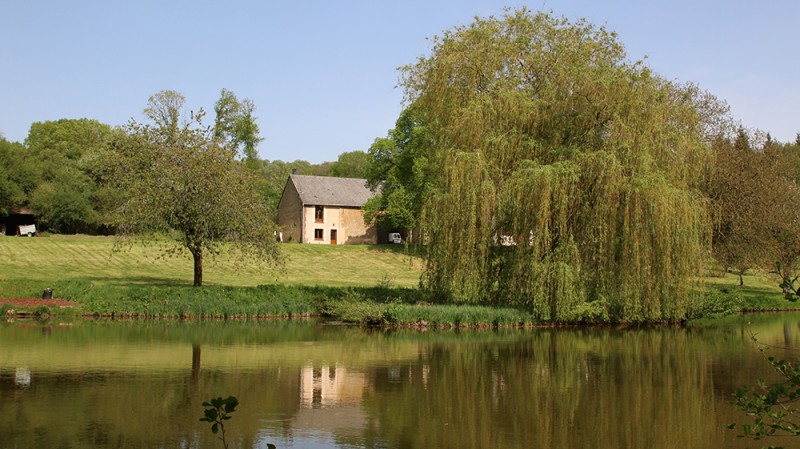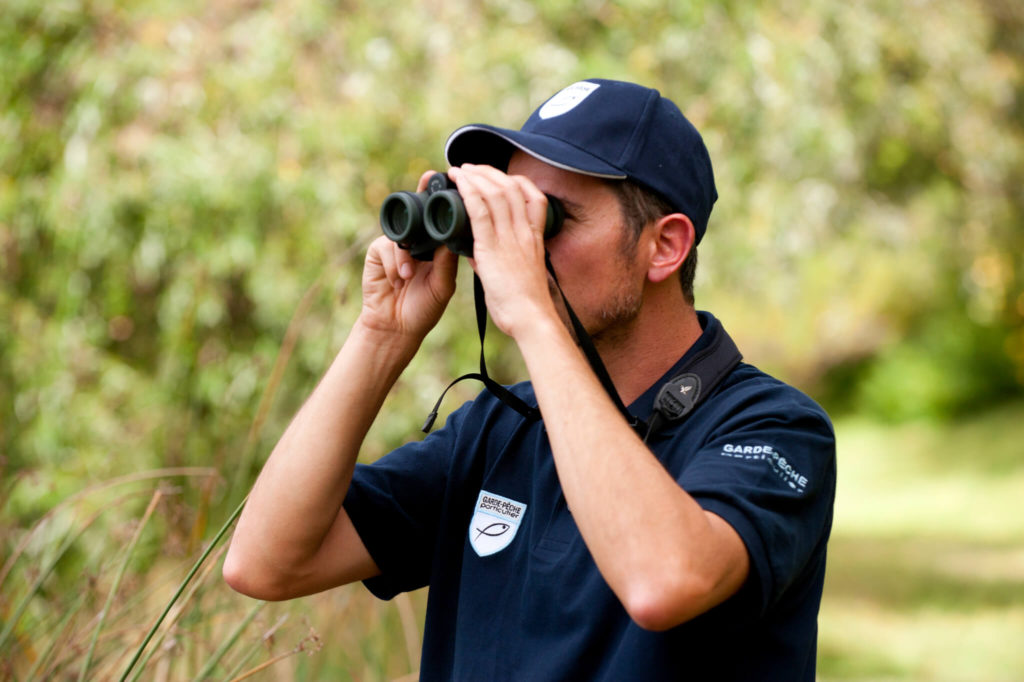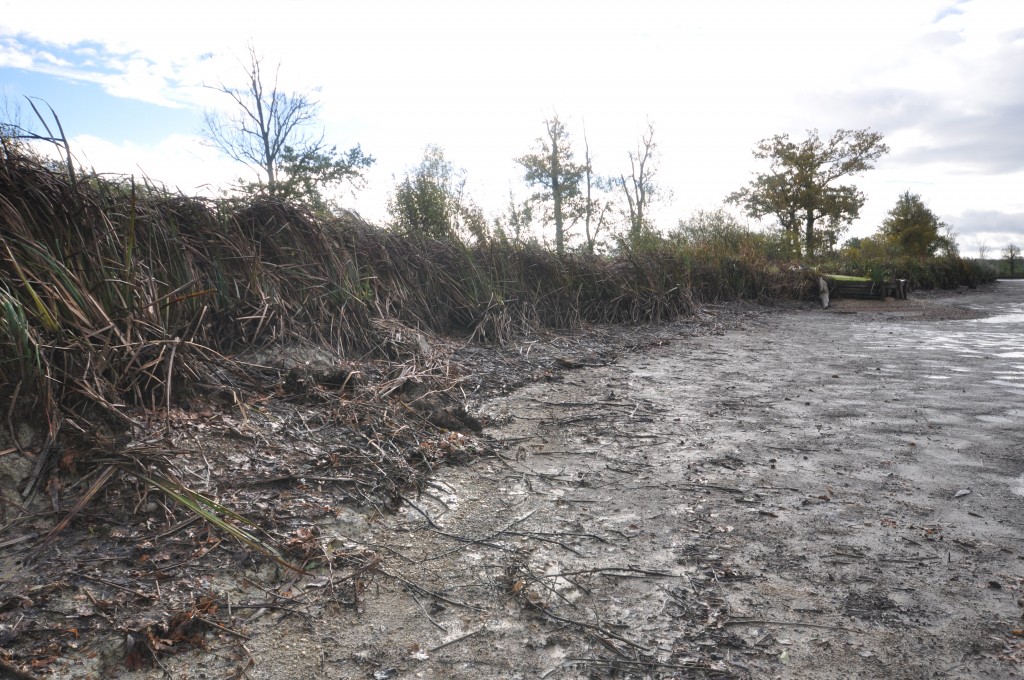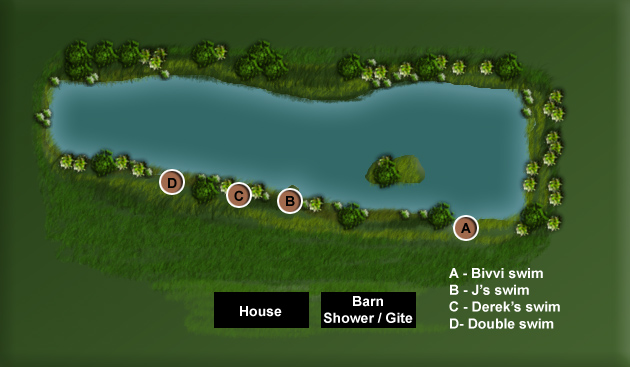We often get asked the same question many times in the office here at Angling Lines – “How do I go about buying a carp lake in France?” – this article should point you in the right direction.
John London bought the popular little French carp lake Bletiere back in the early 2000´s. He kindly put together 3 fantastic articles that take you through the complete process. They can potentially save you loads of time & money when it comes to buying a carp lake in France.
Part One: Buying a Carp Lake in France – Where to start!
We moved to France in 2007 and found our small piece of heaven, La Bletiere. We teamed up with Angling Lines and so life as a commercial carp venue started. But how did we get here? When we have guests fishing here, other than the obvious questions about tactics, the question asked most often is how did we start on the road to our dream.
I have long wanted to put pen to paper as they say and help others who want to follow us over here and so this is it… well at least a start! The following views and ramblings are mine and Lesley’s view and no one else’s and we suspect others may have had different experiences, but this is how it happened for us.
Where do you start when think you might want to move to France?
Well the first thing to do is to holiday over here and visit the areas you think you would like to live. Don’t even think about buying a lake… just enjoy the trip and look at the lifestyle, what’s in the area and is it for you.
Location, location, location!
Our advice on location is to decide how far you believe people will travel and then do not compromise on that decision. Travel is expensive and not everyone wants to drive for hours to get to a venue. It’s a fine line but one you have to decide on.
We took the view that we would not ourselves drive for more than say 4 hours – so we drew a line 4 hours driving from the ferry ports and then started the search in those areas. Once you get past 4 hours, the pool of customers that will book becomes a lot smaller.
The Internet is a great tool at this stage. You can find properties and research the surrounding area… all without leaving your desk! Leggett, one of France’s largest estate agents, has a whole section for carp lakes for sale in France.
Choosing the Property
Once you have spent quality time looking and have decided on an area then the really hard part begins. This is where you have to keep a level head and not let properties steal your heart! You will see and fall for a lot of places, but hang out until you find one that ticks all your boxes.

Key Decisions
Are you going to go big and buy a 15 acre lake and room to put 10 anglers on… or like ourselves go for a smaller lake but be able to offer lake exclusive with accommodation? For us, we liked the idea of only having one group of guests at once and the inclusion of accommodation meant we could charge more per week.
Just remember that the bigger the lake the more carp will be needed to stock it… and they are very expensive! (Stocking carp is a blog article of its own which I’ll cover later).
You have to also think about if you are aiming for drive and survive, or like us, offering a family venue where partners would be happy to come and have quality accommodation and good fishing.
These decisions are critical as they will have a big influence on what you buy.
Just remember this is a new life and a new country, so things will be stressful and you’ll feel at times like nothing is happening. But believe me when you move into your new home you’ll know it was all worthwhile.
Look at the Surrounding Area
When you go to look at places don’t just drive to the property and then drive back. Allow yourselves time to look around the area to ensure it’s got what your guests will need like shops (and things to do if you go for a family venue)… but more important will you be happy living there?
I suspect like us you will visit a lot of lakes and drive many miles and spend a lot of money going back and forth… but believe me it’s worth it. Don’t forget it’s your new life and you have to be certain you will be happy there and that it’s got everything (or the potential to have) you want in your venue.
When you finally find that small part of France that makes you go “Wow!” as you drive down the lane (we did) the next part of your adventure starts… buying the property and getting the permissions to start your business… and that’s what I’ll cover in the next post.
Part Two: You’ve found the lake! What now?
After all the excitement of finding your dream new home in France, complete with a lake to die for, the hard part now starts… and that’s the paper work in France. It’s a killer and there’s a lot of it!
The following is in no way the ultimate legal advice on French property buying and laws. Again it’s just our experience, but hopefully it will save you falling into some of the traps we encountered. Others may have had a different experience, but it’s what happened to us and it may help someone else save a lot of time which we lost.
Permissions
I would firmly advise anyone to check the lake and its permissions even before you go as far as putting in offers. Just because it’s a lake does not mean you can fish it!
To put it simply you either have a ‘closed’ or ‘open’ lake.
I would advise anyone to go for a closed lake as it’s less hassle (I can hear the keyboards going already!)
The simple explanations I was given by the garde-pêche is that an ‘open’ lake usually has a river or stream flowing into them, so its potentially harder to control your fish. A ‘closed’ lake has no natural exits so fish cannot escape into local rivers or streams.
It seems from talking to others in France that the fishing permissions are becoming harder to get and a closed lake is certainly easier to get permission for. We have a closed lake and it wasn’t really a problem for us to obtain all the correct paperwork.

Some people may come on to the Blog and disagree and say you don’t need to contact the authorities, but we took the view of getting them on our side from the start. In France the garde-pêche are powerful people… we know people who have rubbed them up the wrong way and lived to regret it.
We wrote to them immediately after we moved in and all it took was a visit and a walk around the lake with them and two weeks later we had a full fishing license for days and nights (not all lakes can be fished at night).
However, you may get certain restrictions that may not be what you were hoping for. For us it was no pike, catfish and perch. This is because a Category 1 trout stream runs alongside our lake and they do not want predators escaping into it. For us it’s a small price to pay for a hassle free life as we have not seen them since and it’s been 3 years now.
Buying your Dream / Buying A Carp Lake In France
Once you have negotiated (that’s no different to the UK) and agreed a price for the property, make sure you are certain exactly what you are paying. The distribution of fees is different in France and the buyer pays more. Check carefully & only then pay a deposit.
Now you have a ‘cooling-off’ period. Use it! Sit back and think is this really the correct thing for us.
Hopefully it is… then go ahead!
Bletiere – Our Dream Fulfilled
Now’s the time to find someone to help with the French legal part and the visits for the form signings etc. You may speak reasonable French & be capable yourself… but be warned, there’s a lot to look at and, as with most things in France, everyone speaks at once, so it gets confusing!
We were very lucky and the agent we brought the house through, Elizabeth, was an ex-pat who has lived in France for 30 years, so Elizabeth did all the translation for us and watched out for our interest and I’m pleased to say has since become a good friend to us.
When you go to the final signing be prepared as it takes ages and you end up with writer’s cramp and feel you have signed the same form about 6 times… but that’s France… the country runs on paperwork!
Don’t expect to move in within a couple of weeks as our paperwork took nearly 2 months to go through so it gives you plenty of time to pack and dream and to research on the Internet all the things you think you need to know.
Once you have moved in the fun really starts and I will cover that in the next part. For me it was the exciting bit with the lake getting sorted and swims built. But the biggest thing is getting your fish delivered. I’ll cover that too.
Part Three: How to Prepare Your Lake
Well hopefully you have now moved into your new home and are sitting there with plans going through your head about opening for business. Well I am afraid unless you have purchased a up and running fishery, forget it for at least 6 to 12 months.
As we stated before on the previous blog posts, these are Lesley’s and my own views and the things we did and the mistakes we made, so I will now explain my opening paragraph. When we moved in I had not really appreciated the amount of work we had to do to get the lake ready and the facilities up to an acceptable standard that I believe anglers expect today.
Our lake had never been fished before and consequently had never been cleared out of branches and leaves, or had a drain down for years we guessed… we had a blank canvas!
We sat down and planned the lake as we wanted it to put in all the things that I would expect if I paid to fish here. I will list below some jobs and things that seem obvious now… and some things we have learnt along the way and these may help others think about their plans.
Job 1. Does the lake need dredging or draining?
This is important before you even think about putting fish in. You need to know what state the lake bed is in and if it is full of snags. We decided to have one end of the lake dredged as it had silted up badly over the years. This was the first big cost we incurred and one that was not planned for! It took 4 days (and that’s only 1 acre) and it cost 3,000 euros, but this did include all the mud being levelled over the field.
Give this serious thought as it’s the last thing you want to do once your fish are in the lake, and it’s something that takes a few months for nature to recover from.
If you leave lots of silt etc in the lake, you lose valuable water quality and indeed depth, things that are required to allow your carp to live and grow successfully. Equally, if you have lots of snags etc in the lake, this will cause issues for your anglers down the line… get it all sorted ahead of time!

Job 2. What carp are in the lake?
We’ve all heard the stories of people buying lakes and being told there are carp to 30 to 40lb in there and after moving in finding nothing, so we took the view there was nothing in ours. As it turned out this was not far from the truth, certainly as far as size of the carp were concerned. We spoke to several people for advice and also Angling Lines who really helped us a lot. We decided to have the lake netted to ascertain exactly what stock we had.
This was big unplanned expense number 2… it cost us 1500 euros. However, I believe this is money well spent as it will show you exactly what is in the lake and more important the condition of any fish, after all you would not want to put your new stock into a lake full of diseased fish. It also gives you the chance to remove any nuisance fish and any species you do not want in your lake. The fish farmer will pay for these and it helps with the cost.
When we netted it was a hard day’s work, but exciting as that net reaches the end and you see what you have inherited! In our case it was about 200 carp of all species but none over 5lb! We also had 340kg of small roach removed.

As a keen koi keeper in England and obsessed with water quality I had ours checked at the local government laboratories. For 50 euros it was again money well spent as it showed top quality water and no problems… it all helps to make life easier and less stressful.
Job 3. Plan your lake
Now sit and plan your lake swims and where you want them. Give this a lot of thought as you don’t want to spend days building swims to find them in the wrong place. Think how you would like to fish and the swims you would expect.
Ours was easy as we only wanted to fish one bank so all I had to do was choose the spots and build the swims. Take into account things like trees, is it muddy, are the banks high, is the access easy (including in summers when the water level might drop), do the anglers have to walk far to the facilities?

The final decision is what to build the swims out of. I have seen people put gravel or decking down, but for me this is too noisy. We used wood chip instead which is quiet and drains easily if you get a down pour. It’s also pod and bank stick friendly.
Job 4. Stocking the carp
This is the biggest expense you will encounter and the one you have to get correct as it will be the future of your fishery. There are a few good fish farmers in France and people will always put you in touch with the one they use, but I suggest you look around.
We used one at the start that was 2 hours from us. A journey of this distance is stress for the fish and makes for a long stocking day as you have to go to the farm to agree on the fish and check every one you are going to buy.
Totally by luck out driving one day we found a fish farm only 30 minutes from us who sold great fish. This distance caused a lot less stress for the fish. It’s a sad fact I’m afraid that you will probably lose 10% of the fish you stock due to stress… but there is nothing you can do about it.
You have to order your fish well in advance and they will normally only deliver late in the year when it has cooled down, water temperatures are low and the fish have the winter to rest. So don’t expect to have fished delivered when you want… just plan well ahead and make contact with your chosen farmer and arrange the stocking.

Depending on the size and quantity of carp you buy you will be looking at about somewhere between 15 and 20 thousand euro’s at least. Over the 3 stockings we did we spent more than that… but we have a lot of fish in La Bletiere. As the water is spring fed and the oxygen levels are good and constant, we understood the lake could support this number of fish.
Just to give you an idea, for the last 3 big carp we managed to buy, as big ones are getting hard to get at a price you can afford, they were all around 40lb and they cost about 1100 euro’s each…ouch!
Job 5. Plan the look of your lake
This is really just a thought that may save you time later; think of how you want your lake to look in a year’s time, not now when it may be muddy or overgrown. We had the choice of how we wanted our lake to look and we opted for the natural look. We cultivate the wild flowers that were growing naturally here and this is great for the wildlife. You could go for the tended look and grass. Grass is easier to cut obviously, but for us we prefer the natural look and we will continue to develop this over the years.

This is a snap shot of things we did and I’m sure some people will disagree with some things I have said and say there are easier ways. I’m sure there was but it’s all a learning curve and all part of the challenge of getting it as you want.
But do we regret the move? Well in a word NO… not even when it’s cold and wet and you are clearing the banks. When you stand still and the only noise is the cry of a buzzard circling overhead you know it’s all worth it!

Comments